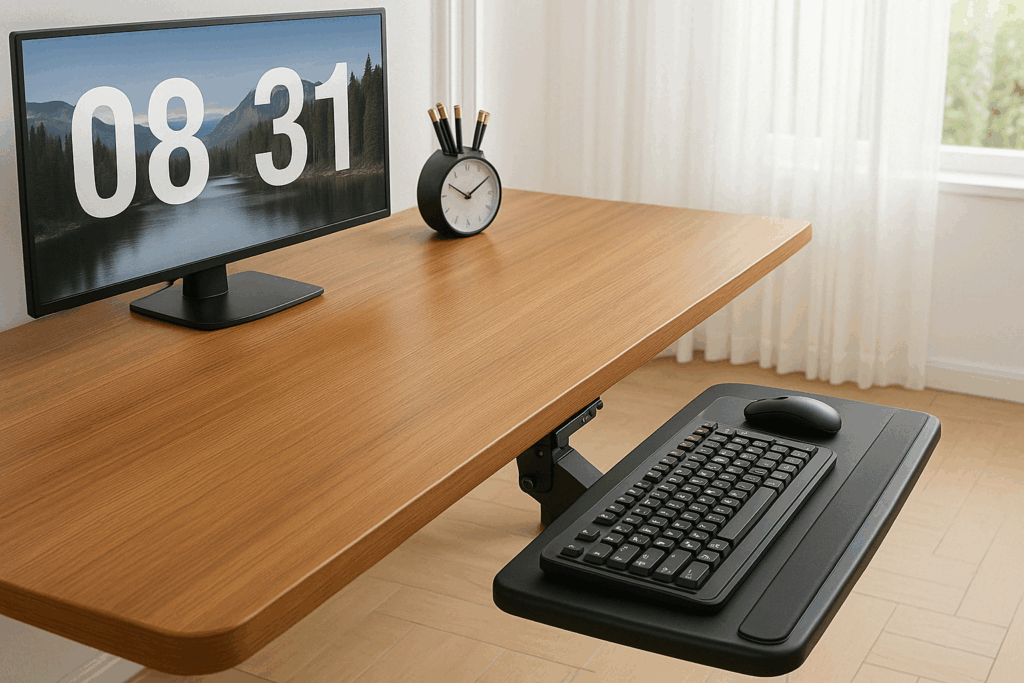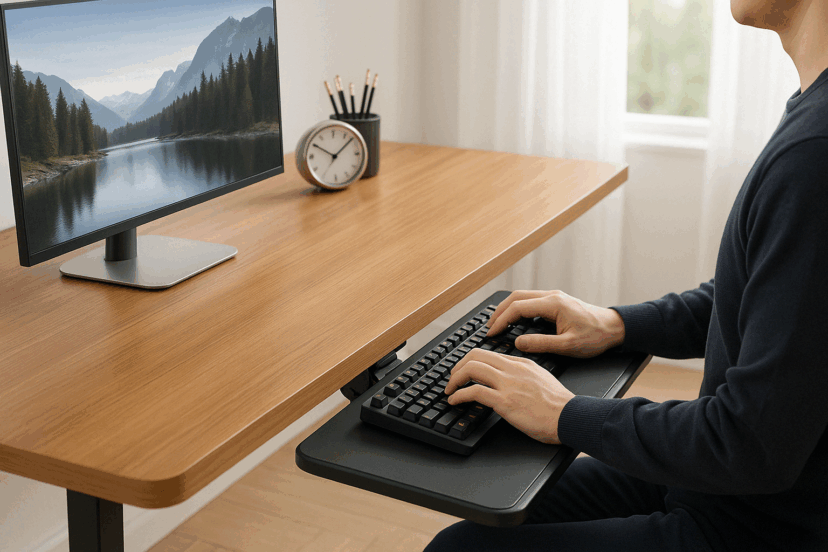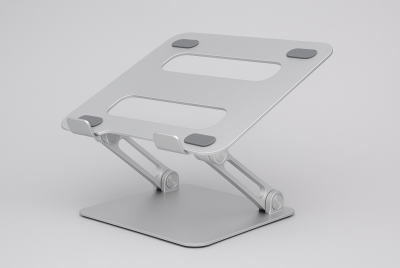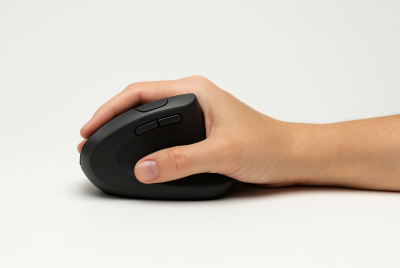Best Ergonomic Keyboard Trays for Remote Workers
We may earn a commission for purchases made using our links. Please see our disclosure to learn more.
Working remotely can be liberating. But without the right tools, your comfort and productivity can take a hit. One often-overlooked piece of equipment is the ergonomic keyboard tray. This simple upgrade can dramatically improve posture, reduce wrist strain, and make your entire home office setup more efficient.
If you’re typing for hours at your dining table, hunched over a non-adjustable desk, it’s time to rethink your setup. In this guide, we’ll show you why an ergonomic keyboard tray is worth every penny, what features to look for, and which models offer the best bang for your buck.
Let’s build a more comfortable, healthier home workspace—starting with the foundation of great ergonomics.
Why Remote Workers Need an Ergonomic Keyboard Tray
Unlike traditional office environments where furniture is often chosen with ergonomics in mind, remote workers are usually left to create makeshift workspaces. This can mean typing from beds, couches, or non-adjustable desks, which often leads to poor posture and long-term discomfort.
An ergonomic keyboard tray:
- Positions your hands, wrists, and elbows at the correct height
- Helps maintain a neutral wrist angle (reducing strain)
- Frees up desktop space
- Supports healthy posture when paired with an ergonomic chair
Whether you’re dealing with wrist fatigue or trying to prevent it, a keyboard tray is one of the most effective investments for your home office.
How Keyboard Trays Support Workplace Health
Several studies have confirmed the benefits of proper keyboard positioning. According to research in the American Industrial Hygiene Association Journal, using an adjustable keyboard can significantly reduce wrist extension, ulnar deviation, and muscle activity in the forearms. The study found that mean wrist extension decreased from 24° to 17°, and participants reported increased comfort levels. (View study on adjustable keyboard use)
Additionally, a study on negative tilt keyboard trays compared sitting versus standing desk setups and found that using a keyboard tray with a negative tilt significantly improved wrist posture in both positions—reducing strain and promoting neutral alignment.
In layman’s terms? A quality tray reduces stress on your wrists and shoulders—helping to prevent issues like carpal tunnel syndrome or chronic shoulder tension.

What to Look for in an Ergonomic Keyboard Tray
Before diving into product recommendations, let’s break down the essential features of an ergonomic keyboard tray:
1. Adjustable Height and Tilt
Look for trays that offer vertical adjustment and a negative tilt (usually -10° to -15°) to keep your wrists in a relaxed, downward-facing position.
2. Mouse Platform
Some trays include an attached or independent mouse platform. This helps keep both devices at the same ergonomic level and prevents overreaching.
3. Sturdy Construction
The tray should glide smoothly, support consistent weight, and not wobble or sag over time.
4. Easy Installation
While under-desk trays may require drilling, clamp-on options are available for renters or less permanent setups.
Top Ergonomic Keyboard Trays for Remote Workers
Here are some of the best-rated, highly functional ergonomic keyboard trays you can order today on Amazon:
VIVO Adjustable Computer Keyboard & Mouse Platform Tray
Why It Stands Out:
This under-desk keyboard tray is a favorite among remote workers thanks to its large surface area and easy adjustability. With a sturdy build and a smooth slide mechanism, it’s ideal for typing comfort throughout the day.
Pros:
- Spacious 26.8″ x 11″ surface fits both keyboard and mouse
- Adjustable tilt and swivel for optimal wrist alignment
- Sturdy steel track for reliable long-term use
Cons:
- Requires drilling into desk for installation
Best For: Home office users seeking a durable, affordable ergonomic solution.
Mount-It! Under Desk Computer Keyboard and Mouse Tray
Why It Stands Out:
This tray offers a mix of support and simplicity. Its built-in gel wrist rest makes long work sessions more comfortable, while the sturdy glide mechanism ensures smooth adjustment.
Pros:
- Built-in wrist support for ergonomic comfort
- Easy glide rails for sliding in/out
- Height and tilt adjustment included
Cons:
- May not be compatible with desks that have underbars or braces
Best For: Users who value wrist support and want a straightforward tray setup.
HUANUO Keyboard Tray Under Desk
Why It Stands Out:
This HUANUO tray is built for full flexibility, featuring 360° rotation, adjustable height, and a tilting design that supports long hours of remote work. It mounts under the desk and includes a separate mouse pad platform, giving you complete control over your ergonomic setup.
Pros:
- 360° rotation and smooth sliding mechanism
- Adjustable height and negative tilt for wrist comfort
- Separate mouse pad tray for better arm alignment
Cons:
- Installation requires screws and may take time
Best For: Remote workers seeking full ergonomic customization and workspace control.

HUANUO Clamp-On Keyboard Tray Under Desk
Why It Stands Out:
Ideal for renters or anyone who prefers a no-drill setup, this clamp-on tray installs easily without tools and provides a reliable, ergonomic typing platform.
Pros:
- Tool-free installation with sturdy clamps
- Spacious tray (25.6″ x 9.8″)
- Built-in wrist rest for added comfort
Cons:
- No tilt or height adjustment—fixed position only
Best For: Users needing a quick, drill-free ergonomic upgrade.
Uncaged Ergonomics KT2-b Adjustable Keyboard Tray
Why It Stands Out:
Designed for dynamic work environments, this under-desk tray supports sit-stand transitions, with flexible adjustments that cater to a variety of postures.
Pros:
- Adjusts vertically and tilts up to 15°
- Supports both seated and standing desk users
- Removable mouse pad mounts left or right
Cons:
- Requires installation with screws
- Slight learning curve during setup
Best For: Users with standing desks or those who alternate work positions often.
Choosing the right keyboard tray depends on your desk style, posture needs, and preferred features. Each of these options provides strong ergonomic support for remote workers looking to stay comfortable and productive all day long.
Internal Tools That Work With Keyboard Trays
To get the most out of your keyboard tray, pair it with these supportive accessories:
- Ergonomic Office Chair – Keeps your spine aligned and reduces back pressure.
- Monitor Arm or Stand – Raises your screen to eye level, preventing neck strain.
- Footrest – Helps support proper leg and hip posture, especially when seated for long hours.
Conclusion
Absolutely. In the long run, ergonomic keyboard trays help prevent repetitive strain injuries, boost productivity, and create a more enjoyable workspace. Remote work isn’t going away—and neither should your commitment to working comfortably.
If you’re serious about your health and efficiency, investing in a keyboard tray might just be one of the smartest home office upgrades you make this year.
Also, if you’re setting up an ergonomic workspace for the whole family, don’t miss our guide on ergonomics for kids. It’s packed with tips to help children develop healthy posture and productive study habits from a young age.
FAQs
1. How do I know if my desk can support an ergonomic tray?
Most desks support tray installation unless the desktop is too thin or made from fragile materials. Clamp-on trays are a good alternative if you’re unsure.
2. Do I need a separate mouse tray?
Not necessarily. Many modern trays come with integrated or side-mounted mouse platforms. Just ensure the surface is large enough for both keyboard and mouse.
3. Are keyboard trays good for standing desks?
Yes! Especially ones with extreme tilt angles like the iMovR SteadyType. Just make sure your tray is compatible with height-adjustable platforms.
4. How often should I adjust my tray position?
Try changing angles slightly every few hours to encourage movement and reduce muscle fatigue.
5. What’s the difference between an ergonomic tray and a standard one?
Ergonomic trays allow height and angle adjustments to align with your natural posture. Standard trays are fixed and offer little flexibility—often leading to strain.




